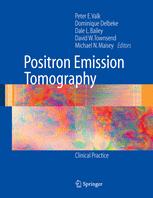

Most ebook files are in PDF format, so you can easily read them using various software such as Foxit Reader or directly on the Google Chrome browser.
Some ebook files are released by publishers in other formats such as .awz, .mobi, .epub, .fb2, etc. You may need to install specific software to read these formats on mobile/PC, such as Calibre.
Please read the tutorial at this link: https://ebookbell.com/faq
We offer FREE conversion to the popular formats you request; however, this may take some time. Therefore, right after payment, please email us, and we will try to provide the service as quickly as possible.
For some exceptional file formats or broken links (if any), please refrain from opening any disputes. Instead, email us first, and we will try to assist within a maximum of 6 hours.
EbookBell Team

4.3
8 reviewsThis text is based on the second half of P.E. Valk et al’s 2003 bestseller Positron Emission Tomography: Basic Science and Clinical Practice and deals with only the clinical research and applications. Positron Emission Tomography: Clinical Practice consists of twenty-two fully revised and thoroughly updated chapters enhanced further by six entirely new chapters. The abundance of new material makes this book an essential volume for anyone training in, or practicing, Nuclear Medicine.
The first chapters of this book summarize the scientific aspects of PET and PET/CT including physics, instrumentation, radiation dosimetry and radiation protection. A chapter on normal variants in FDG PET imaging serves as an introduction to the clinical chapters. The clinical chapters cover a wide range of oncology applications and they have been updated to include the impact of FDG PET/CT imaging in oncology. Two chapters address imaging with tracers other than FDG, such as an hypoxic tracer. The book concludes with chapters on the use of PET and PET/CT in cardiology and neurology. A chapter on PET imaging of infectious processes is also included.
The applications in this book will be useful for residents and those training in medical imaging specialties, as well as imaging professionals in private or academic practice who need to become familiar with this technology and its applications. This book will also be essential reading for those whose specialties carry over to PET and PET/CT, such as oncologists, cardiologists, neurologists and surgeons.